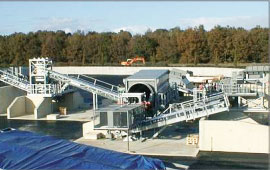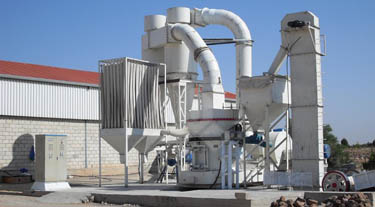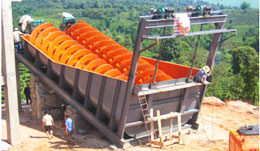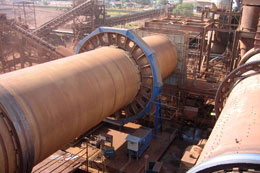-
Sand Making Crusher
- PCL-Vertical Shaft Impact Crusher
- SBM Hydraulic VSI Crusher
- VSI5X Series Impact Crusher
Bentonite Processing
Bentonite production in the world

Bentonite and bentonite Fuller’s earth are mined worldwide. The USA is the major producer of bentonite Fuller’s earth . Approximately 90% of world bentonite production is concentrated in 13 countries: the USA, Greece, the Commonwealth of Independent States, Turkey, Germany, Italy, Japan, Mexico, Ukraine, Bulgaria, Czech Republic, South Africa, and Australia . The USA, Greece, and the Commonwealth of Independent States account for roughly 55% of the annual world production of 10 million tonnes. Wyoming produces the bulk of bentonite mined in the USA (Ampian, 1985). In 2002, the bulk of US production was used domestically, and only a small fraction, 11%, was exported worldwide. In addition to the mining of natural deposits, small amounts of bentonite, are produced synthetically in both Europe and the USA for use as a catalyst.
We provide Jaw crusher for bentonite crushing processing, SCM Ultrafine mill for grinding processing which final products size 325-2500 mesh, Mobile crusher for bentonite mobile processing. If you need any bentonite processing machines,please contact us.

Most bentonite is mined by stripping methods from open pits after removing any overburden, although underground methods are used in a few places, such as the Combe Hay district in the United Kingdom . Since deposits are often not uniform in composition, bentonite from a single pit may be separated into several stockpiles, which subsequently are blended to obtain the desired composition. Bentonite is usually processed by breaking large pieces into smaller fragments, drying at low to moderate temperatures to remove water and other volatiles without altering the molecular structure of the bentonite, and grinding to the desired size. The desired size is generally 200 mesh or finer, which is equivalent to particle diameters of less than 70 µm. A coarser granular material is also produced for kitty litter applications. Processing may also include beneficiation, which may involve removing sand and other impurities as well as modifying the type of exchangeable ions in the crystal lattice.
- Limestone Crusher
- Barite Crusher
- Granite Crusher
- Kaolinite Crusher
- Calcite Crushing
- Tombarthite Crusher Mill
- Bentonite Grinding Plant
- Basalt Ore Crusher
- Lignite Crusher Mill
- Silica Ore Crusher
- Tin Ore Mine
- Lead and Zinc Ore Crusher
- Ochre Crusher Mill
- Garnet Crusher
- Mica Crusher
- Asbestos Crusher
- Manganese Ore Crusher
- Talc Crusher Mill
- Feldspar Crusher
- Iron Ores Crusher
- Dolomite Crusher
- Quartz Crusher
- Gypsum Crusher
- Calcium Carbonate Grinding
- Bentonite pulverizer
- Bentonite processing
- Bentonite beneficiation
- Bentonite quarry
- Bentonite mining
- Bentonite powder manufacturing
- About Us
- |
- Service
- |
- News & Events
- |
- Contact Us
- |
- Resources
- |
- Showroom
Aggregate Crusher
Artificial Sand Making
Ballast Crushing Machine
Basalt Stone Crusher
Barite Mine Process
Beneficiation Plant
Bentonite Crusher
Bentonite Milling
Calcium Carbonate Crusher
Calcium Carbonate Grinding
Cement Grinding
Concrete Crusher
Coal Crusher
Copper Crusher
Cement Mill
Chrome Mining Process
Copper ore Beneficiation
Coal Processing
Coal Pulvarizer
Feldspar Crushing
Feldspar Grinding
Flotation Machine
Gold Crusher
Gold Mine Equipment
Gold Processing Machinery
Granite Crusher
Granite Crushing Machine
Granite Quarry Equipment
Gypsum Crusher
Gypsum Mining
Gypsum Powder Production
Iron Ore Beneficiation
Iron Ore Crusher
Kaolin Processing Plant
Limestone Crusher
Silica Sand Crusher
Iron Ore Mining Equipment
Cement Production Line
Talc Production Line
Quartz Crushing Machine
Limestone Mining Process
Manganese Benificietion
























